Cameras are always a big deal at IBC but with most of the major manufacturers shifting the emphasis from product launches to development, camera accessories are tipped to steal the show this year.
Click here to read more on solving storage
Mitcorp's business development manager, Dennis Lennie, argues that one of the most exciting devices is likely to be Convergent Design's Flash XDR solid state recorder, which captures at between 50 and 100 megabits per second (Mbps) at 4:2:2, a level that meets the BBC's criteria for high definition, and which can be used in conjunction with cameras such as Sony's XDCAM-EX range.
Although the XDR debuted at NAB, it has just begun shipping and will be exhibiting with partners Canon and Polecam at IBC. The Flash XDR will be shown alongside the tape-based Canon XL-H1, Canon's first move into tapeless cameras. Polecam will be showing a prototype that bundles the XDR with its camera crane (shown right), allowing it to be attached to a camera such as the Iconix HD and the Toshiba HD.
Polecam sales and marketing manager Mel Noonan said: “The Flash XDR records audio and pictures at a higher level than HDV and it costs less than£3,000. It is a really significant development.”
Firsts for Europe
Sony remains tight-lipped about its new camera launches ahead of the show, but its semi-shoulder-mounted, interchangeable lens model the EX3, Sony's second solid-state camera, is expected to be on show in Europe for the first time.
Similarly, IBC will be the first show at which a working model of Sony's high-end XDCAM 422 model will be exhibited. The camera began shipping last month and the company experienced a higher take-up than it had anticipated, according to Mark Bainbridge, Sony's general manager, media channel sales and professional services, who confirms that the technology giant's focus at IBC has changed. “We are using the show to perform technical demos and get customer feedback on new developments. The emphasis has shifted from product launches to development.”
Panasonic has once again decided not to exhibit at IBC, but like last year will have a presence at the show. Marketing manager Marc Irwin says there will be a “tech suite” showing key customers concepts in the early stages of development.
Thomson Grass Valley will be showing a fibre module from Telecast that will fit between the Infinity camera and battery and provide I/0 capability for video and audio control allowing it to be used in a studio. Thomson's senior strategic marketing manager, Mark Chiolis, says: “This will reduce the cost of an average studio camera from between US$100,000 and $200,000 to between $50,000 and $70,000.”
The company will also be showing its high-speed camera, the LDK 8300, which will start shipping after IBC, and a wireless HD camera set to ship this autumn.
Red fans will be eagerly awaiting developments to Scarlet, Red's 3K camera, the prototype of which was debuted at NAB earlier this year. The NAB version of the camera had a 2/3-inch Mysterium X sensor and could shoot between one and 120 frames per second (180 in burst mode).
Avid will return to IBC with a fanfare after its year away - the company will be shouting about its new DS version 10.
The product comprises new hardware and software and offers professional editing, compositing, keying, image retouching, paint and graphics capabilities. The DS version 10 will start at£37,600 - compare that with the£66,000 price tag for the DS Nitris - and is the latest repositioning in the Avid range.
UK sales manager Sean Bradley says: “We didn't want to make this announcement before the product was ready, but it's a big launch for us. The DS has always had a loyal following and we are looking to increase that.” The product will be ready to ship in the US this month, with European release a fortnight later.
Monitors continue to be a big theme at this year's market, a year on from the release of Sony's next generation ChromaTru colour management technology. The range is still being tweaked and Sony will launch new product and demonstrate a prototype.
In the current market, OnSight's chief engineer, Richard Mills, argues that the Barco RHDM 2301 is the most likely LCD CRT Grade 1 replacement to date because it has the greatest range of bright and darkness adjustment. The pre-production model, which was exhibited at NAB, is being redesigned and the updated version will be on show in Amsterdam.
The Farm's chief engineer, David Klafkowski, says he will stay with the Sony, however. “We tend to buy Sony because it is a ‘no argument' solution,” he says. “It has always been the industry standard and clients are used to the brand.”
While there is still some debate around LCD replacements for CRT Grade 1 monitors, the industry has one eye on competing technologies - two promising examples of OLEDs (organic light-emitting displays) and FEDs (field emission displays).
OLED uses substances that emit red, green, blue or white light. The monitors require no backlight and can be viewed from any angle - the screens are flat and lightweight. To date manufacturers have had problems producing large OLED screens, restricting their application to mobiles and digital cameras, although Sony will be exhibiting an 11-inch OLED monitor which began shipping at the beginning of the year.
The FED technology is particularly exciting, enthuses OnSight's Richard Mills. “It mixes the display characteristics of the CRT screens with the scalability of a LCD or flat screen technology. The CRT technology offers colour stability and longevity, which is very difficult to achieve with LCD screens.”
Ikegami has taken up the licence with the FED's creators and was exhibiting prototypes at NAB - more advanced versions are expected at IBC. However, Mills predicts that the technology will take another three to five years to become established.
3D, DI and colour correction
Stereoscopic 3D, one of the highlights of last year's IBC, will have a new focus, according to Quantel's head of marketing, Roger Thornton. The emphasis will be more on the broadcast than the film side this year, he reveals. Developed for film, the technology is as applicable to broadcast, he insists.
“Broadcasters in particular are really looking to differentiate their premium content [with 3D],” he adds. Thornton believes much of the 3D technology at the show will be about making it practical for live TV. Quantel's partnership with stereoscopic production pioneers 3ality Digital, announced earlier this month, is testament to both companies commitment to broadcast delivery.
One IBC highlight, to take place on Sunday 14 September, will be a live HD stereoscopic 3D broadcast of an interview with DreamWorks Animation SKG chief executive Jeffrey Katzenberg in Los Angeles. The content will be acquired using 3ality Digital's technology, delivered to the IBC convention centre by Arqiva and passed via a 3ality decoder to projection company Christie. The interview will be shown to around 1,000 delegates.
3ality chief executive Steven Schklair says: “One of the big challenges has been how to keep the parallel signals in perfect synchronisation. That's a special challenge over satellite links, where atmospheric conditions can be problematic.”
To overcome this, 3ality will multiplex the 3D signals into a single 2D signal for transmission, which will be rebuilt into a 3D picture once it has arrived. 3ality will use two camera rigs for the acquisition, allowing them to demonstrate that 3D pictures can be cut and mixed live.
Visual effects developer The Foundry will be showing Ocula, its stereo plug-in toolset, at the IBC session Putting It All Together - New Dimensions For The Big Screen, (15 September at 11.30am).
Also on the 3D side, grading specialist Digital Vision will be demonstrating integration with The Foundry's compositing tool Nuke and Avid's Media Composer.
Digital Vision will be showing a new processing grid called Turbine that is scalable and configurable. As Digital Vision's managing director, Simon Cuff, explains, it can be set up to do real-time 4K motion compensation noise reduction or reconfigured to batch transcode Red files faster than a single station.
Its GPU technology has also progressed, with improvements to the visualisation pipeline and interactivity - more last-minute changes will be accessible in real time and will accurately represent the deliverable format whether it is film, broadcast or Blu-ray Disc.
Film scanning and grading specialist FilmLight is announcing simple integration via Cloud Connectivity to Autodesk's Flame to enable a smoother commercials workflow. The company will also debut a restoration workflow with the Pixel Farm's PF Clean where both products are sharing BaseLight's local storage.
Perhaps most exciting is the launch of a new ultra high-resolution film recorder. FilmLight sales director Mike Grieve says the solution is “twice as fast as a laser recorder and double the resolution”.
He adds: “Comparing this to other solutions on the market is like comparing a motorbike to a bicycle.” FilmLight will be partnering on this launch with an as yet unnamed company.


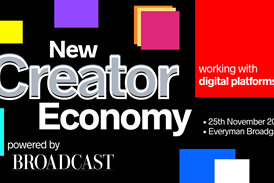
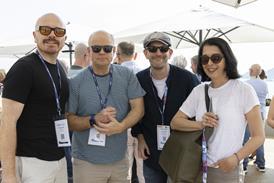
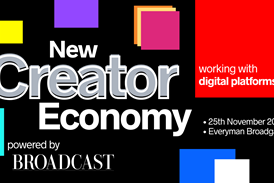





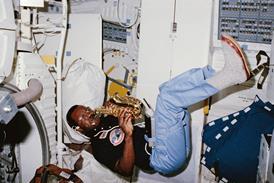
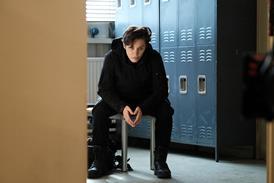










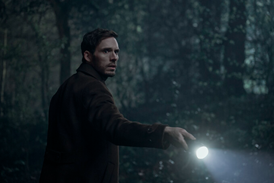



No comments yet